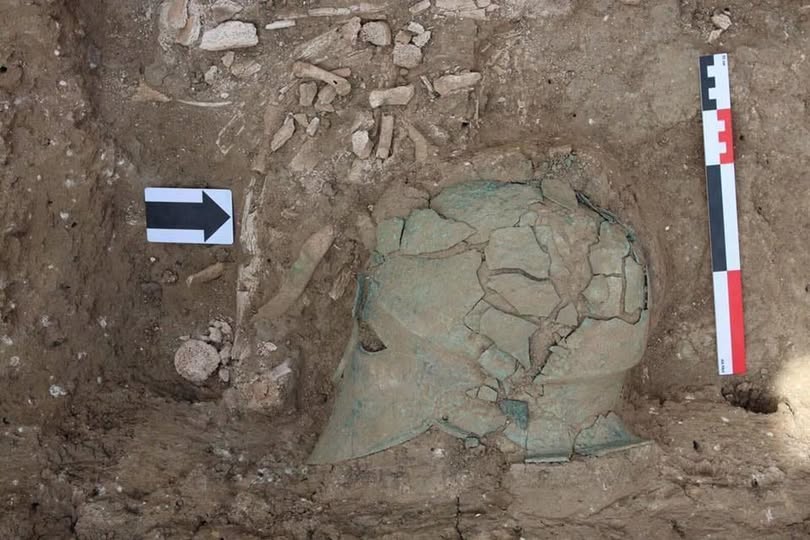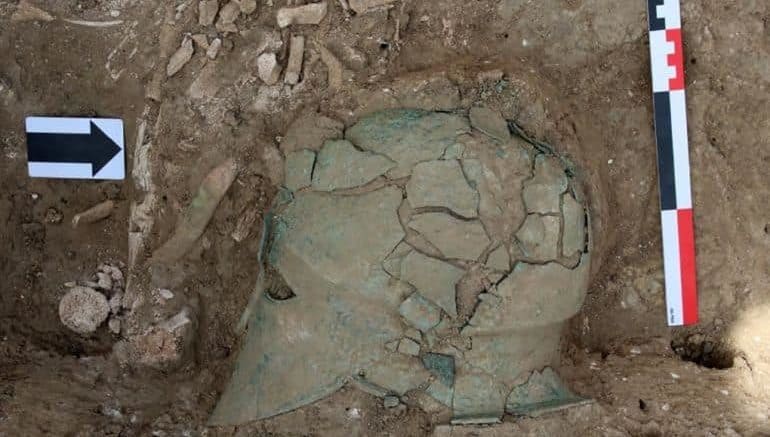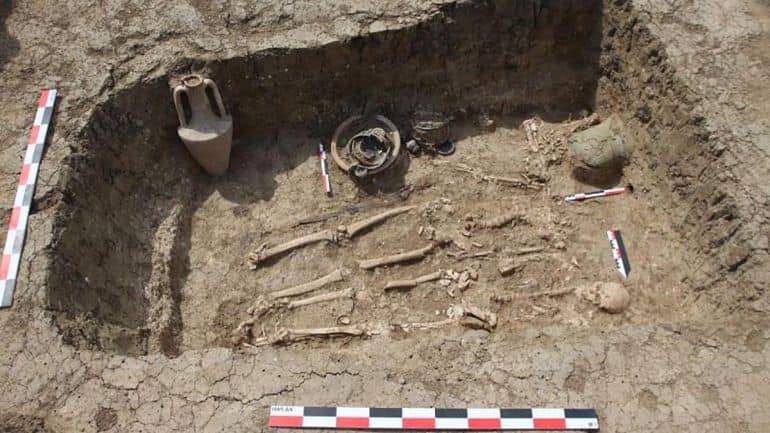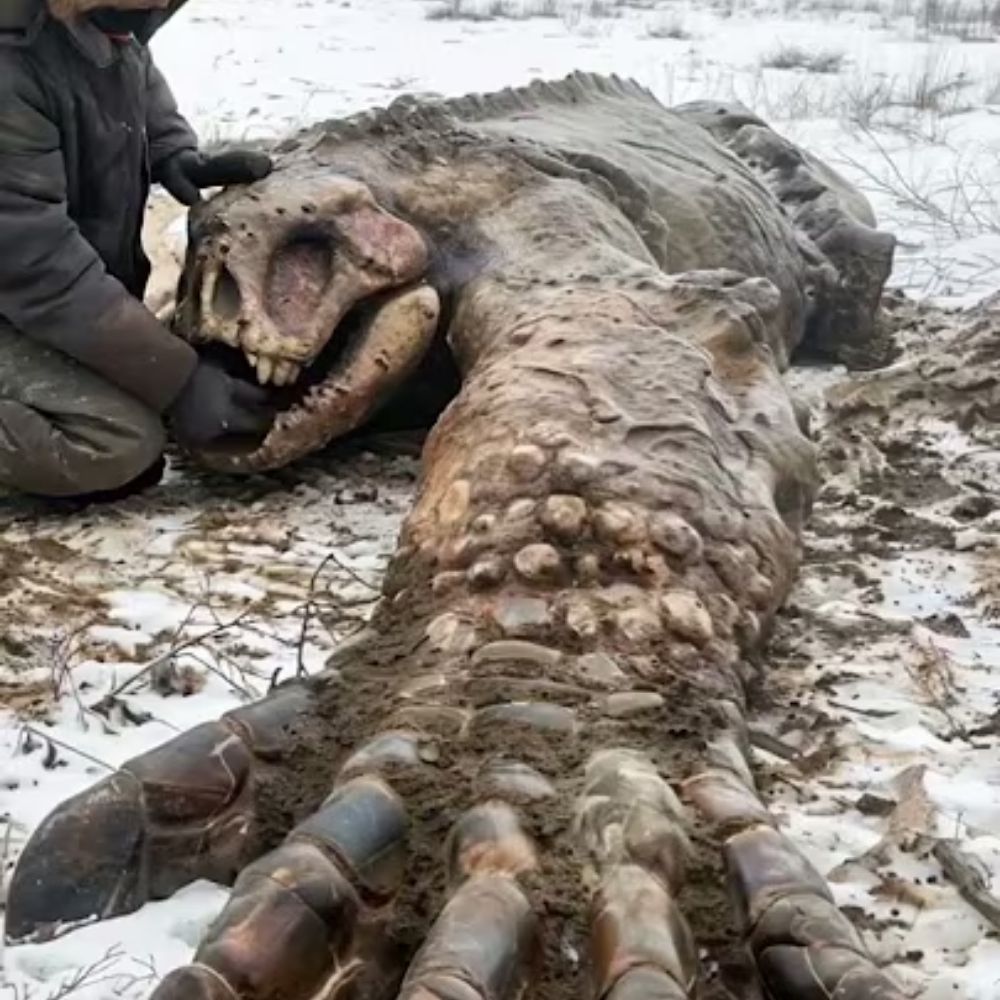
First Corinthian Helmet was discovered North of Black Sea

RIA Novosti reported that a Corinthian helmet from the 5th century BC was found in a grave in the Taman Peninsula, southwest of Russia. It is the only such helmet discovered north of the Black Sea.

Corroded after being buried for 2500 years, and highly fragmented, its discovery remains spectacular. Made of bronze, Corinthian helmets covered the entire head and neck, with slits for the eyes and mouth and protruding cheek covers (paragnathides).
A large curved projection protected the nape of the neck. The interior was padded with fabric or leather to protect the warrior’s skull. Often, their crest was surmounted by a crest (lophos) with a horsehair plume. Highly protective because they completely covered the head, these helmets represented an essential piece of equipment for the Greek hoplites, the famous foot soldiers of the phalanxes.

Corinthian helmets appeared in Greece around the 6th century BC and are one of the symbols of ancient Greece. The goddess Athena, or Pericles, is frequently depicted wearing them. When a warrior died, his helmets were buried next to him. According to Roman Mimohod, director of the expedition of the Insтιтute of Archaeology of the Russian Academy of Sciences (IA RAS), “the helmet of the Taman peninsula belongs to the Corinthian Hermione-type and would date back to the first quarter of the fifth century BC.”
Archaeologists of the Russian Academy of Sciences have been working for two years in a necropolis of 600 burial mounds where many Greek warriors of the Bosporus kingdom are buried. Several Greek colonies were indeed present in this region. Their settlement extends from the end of the 7th century BC until the second quarter of the 4th century BC.
“These settlements were in very close contact with the Scythian inhabitants of the steppe,” says historian Iraoslav Lebedynsky, a specialist in these ancient Eurasian cultures. From the 6th century BC, the Greeks founded large cities on the northern coast of the Black Sea. The main ones were Olbia, at the mouth of the Dnieper; Panticapaion, today’s Kerch, in the extreme west of the Crimea, and Chersonese (Sevastopol); on the Russian bank, one found Phanagoria (Taman), also the name given to the peninsula on which the Corinthian helmet was discovered.


